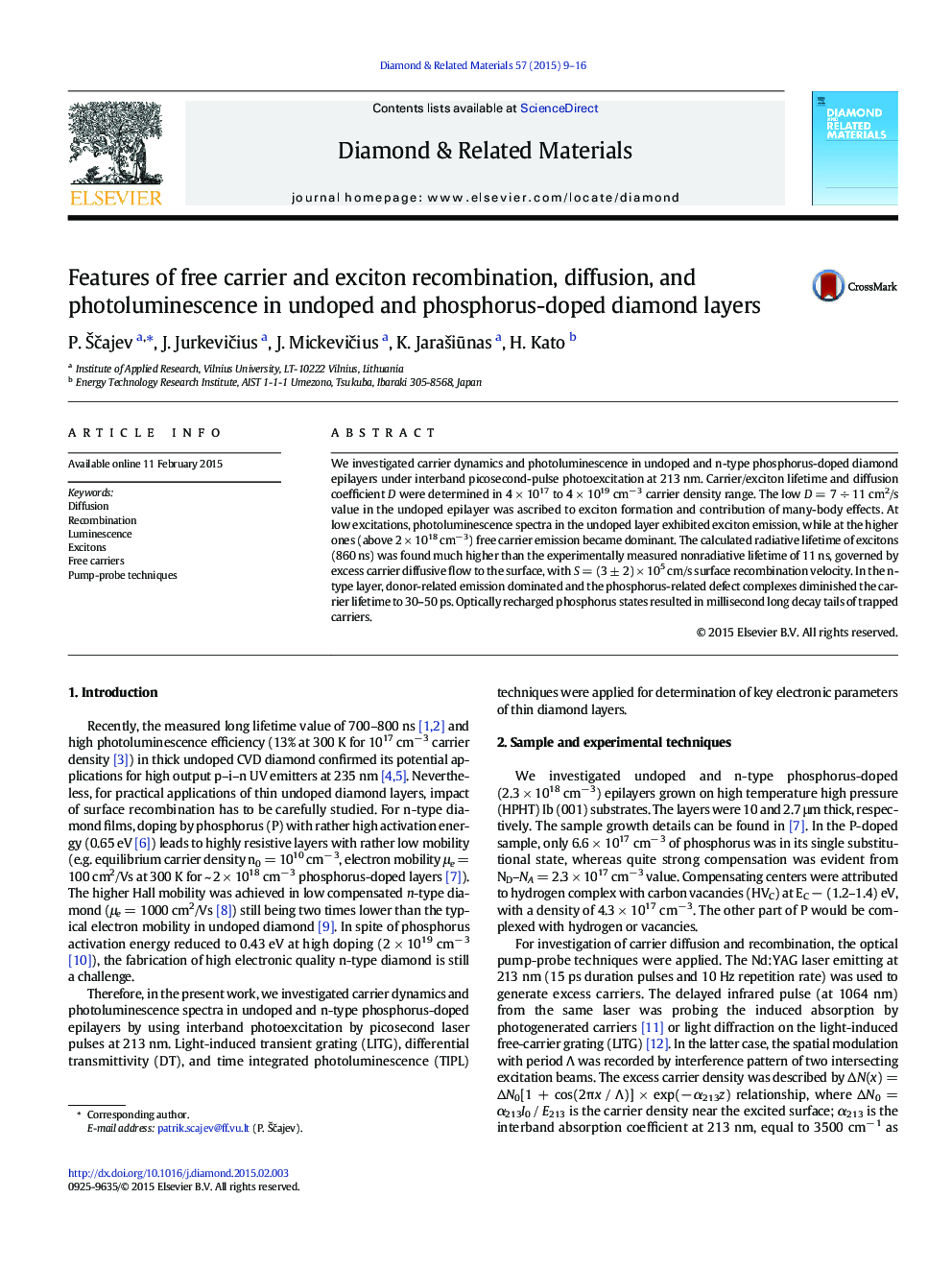| Article ID | Journal | Published Year | Pages | File Type |
|---|---|---|---|---|
| 701540 | Diamond and Related Materials | 2015 | 8 Pages |
•Diffusion coefficient decrease with excitation was explained by exciton formation.•The exciton diffusion coefficient of 5.5 cm2/s was determined.•PL efficiency is reduced by nonlinear Auger recombination.•Phosphorus doping decreases exciton lifetime by few orders of magnitude.•Recharged phosphorus donor recovery occurs in millisecond time scale.
We investigated carrier dynamics and photoluminescence in undoped and n-type phosphorus-doped diamond epilayers under interband picosecond-pulse photoexcitation at 213 nm. Carrier/exciton lifetime and diffusion coefficient D were determined in 4 × 1017 to 4 × 1019 cm− 3 carrier density range. The low D = 7 ÷ 11 cm2/s value in the undoped epilayer was ascribed to exciton formation and contribution of many-body effects. At low excitations, photoluminescence spectra in the undoped layer exhibited exciton emission, while at the higher ones (above 2 × 1018 cm− 3) free carrier emission became dominant. The calculated radiative lifetime of excitons (860 ns) was found much higher than the experimentally measured nonradiative lifetime of 11 ns, governed by excess carrier diffusive flow to the surface, with S = (3 ± 2) × 105 cm/s surface recombination velocity. In the n-type layer, donor-related emission dominated and the phosphorus-related defect complexes diminished the carrier lifetime to 30–50 ps. Optically recharged phosphorus states resulted in millisecond long decay tails of trapped carriers.
